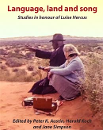'In July 1943, noted Victorian author and travel writer Eileen Finlay (1878- 1950) returned to the tourist resort town of Healesville to enjoy ‘a respite from her literary labours’ (Healesville Guardian 24/7/1943). Staying at Golf House, her respite did not prevent her from appearing at the Healesville Library to promote her publications and meet her fans. Eileen Finlay was born Mary Ellen Moroney in Maffra, Gippsland, in 1878, and lived for a time in Colac where her father was appointed shire engineer in 1882 (Barraclough 1995: 56). In 1889, two years after the death of her father, her family moved to Lilydale where her connection with Healesville commenced. In 1899 she married architect, Alexander Kennedy Smith Finlay, and settled in Melbourne. On 29th December 1921 her husband was one of three passengers who drowned when a launch capsized en route to Lake Tyers Aboriginal station. Many of the survivors, including Eileen Finlay and her son, owed their survival to two Aboriginal women from the Aboriginal settlement who rescued them in a rowing boat – once on shore, men and women from the settlement assisted them by lighting a fire to dry their clothes (The Argus 31/12/1921). Finlay’s pen names included Eileen Finlay, Mary Eileen Finlay, Mollie Eileen Moroney, Mary Eileen Fortescue, and Mrs. E.F. Boswarrick. At least 14 major works are attributed to her. Other than her most well-known novels, The Caravan Passes: a Family Saga (1941), Full Turn: a Family Saga (1942), Undefeated (1943), and The Hills of Home (1943), Finlay was known for the many articles she wrote for The Radiator, the official magazine of the Royal Automobile Club of Victoria, and for newspapers such as the Lilydale Express, The Argus, and the Healesville Guardian (Thompson 2005). Her first travel article was published in The Radiator in May 1937. Her death notice (The Advertiser 13/6/1950) reported that she had only begun to write her first book some eight years earlier in her early 60s.' (Introduction)



